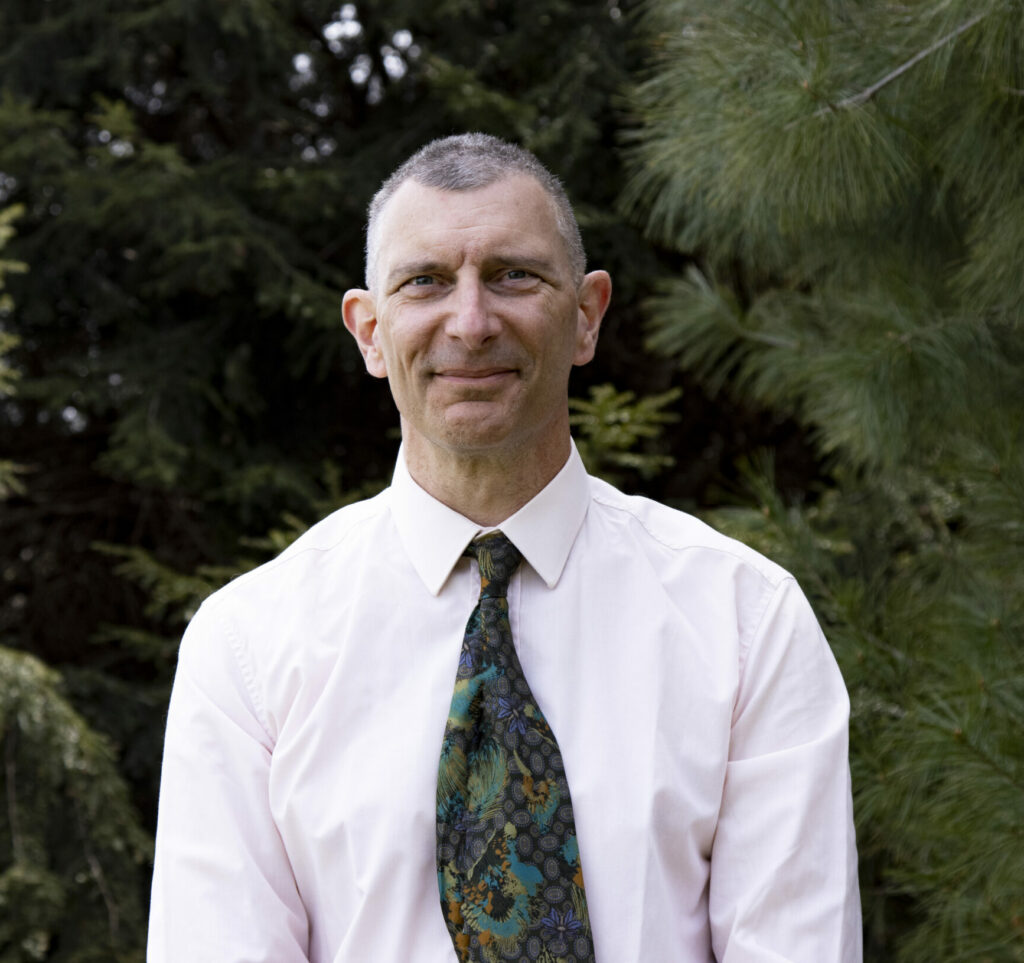
Tell us about yourself and your position at BETE?
I graduated with a degree in mechanical engineering with an emphasis in fluids and thermodynamics and have a background in electronics. I have worked at BETE for over 30 years and for the last 25 years I have managed the spray lab. Besides work, I enjoy outdoor sporting activities and aviation. What I enjoy most about working at BETE is being able to get involved in a wide variety of fields. For example, droplet size measurement requires knowledge of optics and if a customer needs help with a fluidized bed application, I get to learn all about fluidized beds!
Please explain what the department of “Advanced Spray Engineering Services” is, how it first started, and how it benefits our customers?
Some spray process problems are so complex or critical that we need to learn more about nozzle behavior in the process to ensure success. The Advanced Spray Engineering Services (ASES) department was formed ten years ago to partner closely with the customer so we can understand the customer’s process and constraints and apply testing, modeling, and design to explore spray alternatives that are the best match for the customer’s process requirements. This reduces the risk of process failure or failure to solve an existing problem. The benefit for our customers is that we provide a solution to a complex spray process by using an engineering problem-solving approach.
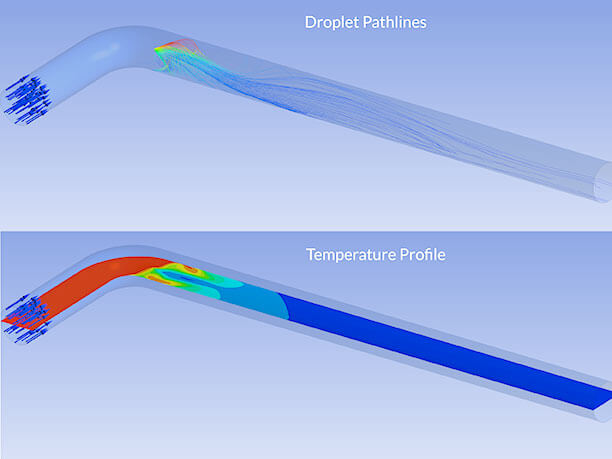
BETE is offering engineering services in terms of Computational Fluid Dynamics (CFD), can you please tell us what kind of applications you usually make CFD simulations for and what important factors to consider? Please give us some details regarding one interesting project you have worked on.
A common application for Computational Fluid Dynamics (CFD) is gas cooling. We use CFD to confirm spray droplets completely evaporate since incomplete evaporation is a process failure and liquid impingement can damage process equipment.
One application involved a deNOx system in a power plant. Ammonia was injected into the hot flue gas using a small air-atomizing nozzle. The power plant was not meeting emission requirements and ammonia was escaping the stack. The installation drawings showed that the nozzle was installed upstream of an elbow, and we suspected the spray was not able to evaporate before reaching the elbow where the droplets would form a film of liquid on the wall. This film has very little surface area so the liquid cannot evaporate. A test of the nozzle at the actual operating conditions provided input for a CFD model that confirmed incomplete evaporation. We were able to use the same spray data and CFD model to explore alternative nozzle locations and when the nozzle was installed in a location where the CFD analysis predicted complete evaporation the plant was able to meet the emissions target and eliminate the escape of ammonia.
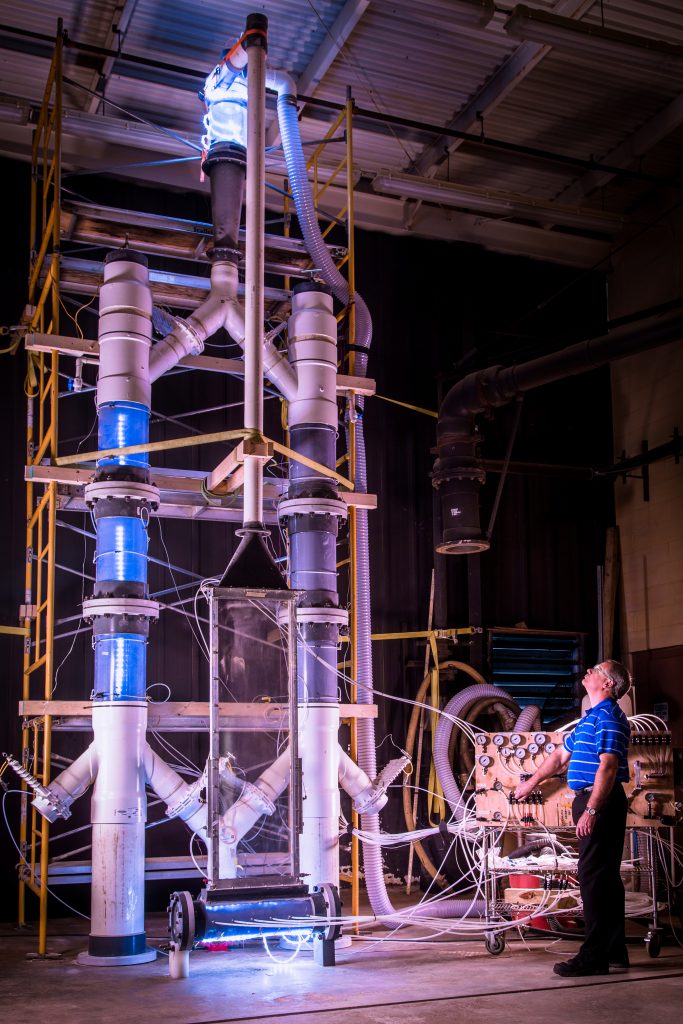
We’ve also worked with eductors to promote mixing in tanks and pipelines. One example of this application involved a city needing to augment the mixing of disinfectant in the water mains during times of low flow.
The required complexity of the CFD model is a consideration. For example, although a flue gas may contain particulate a CFD model that does not include the influence of the particulate may be adequate and will be less expensive. A project may begin with a relatively simple model to assess many options and then progress to more complex models to validate proposed solutions to a problem.
What kind of difficulties/challenges can be solved through CFD?
CFD is a complement to physical modeling. It is a method for visualizing what is occurring in a process when it is not possible to observe or duplicate it in the lab due to hazards such as high pressures or dangerous chemicals. CFD helps us understand why a system isn’t working or can minimize risk by confirming that a system will operate properly when it is built.
It’s important to remember that CFD does not tell you how to achieve a particular result; it only predicts what will happen under a given set of conditions. It takes an experienced engineer with knowledge of the process goals and constraints to interpret the results to arrive at an optimal solution.

Tell us about BETE´s spray testing laboratory?
The spray lab is part of the Engineering Services department which provides test and measurement support for spray nozzle development, research, production quality control, and customer-driven testing. Spray testing includes measurements of pressure, flow rate, droplet size, and pattern distribution and we conduct other tests as necessary. For example, we have done high-speed photography and hydrostatic testing. We have measured breakaway forces in O-ring seals, component lifetime, and susceptibility of assemblies to stress corrosion.
Most of the piping and equipment are modular and can be reconfigured for a variety of tests. In a single day, we might test something with an orifice you can’t see without a microscope and something so large you need a forklift to move it, so flexibility is critical.
The lab also complements our CFD work since an accurate CFD model of a spray requires accurate knowledge of the spray characteristics such as the initial droplet size and velocity. BETE can measure spray characteristics in the lab and use this information in our CFD models, so we do not need to rely on generic models of a spray.
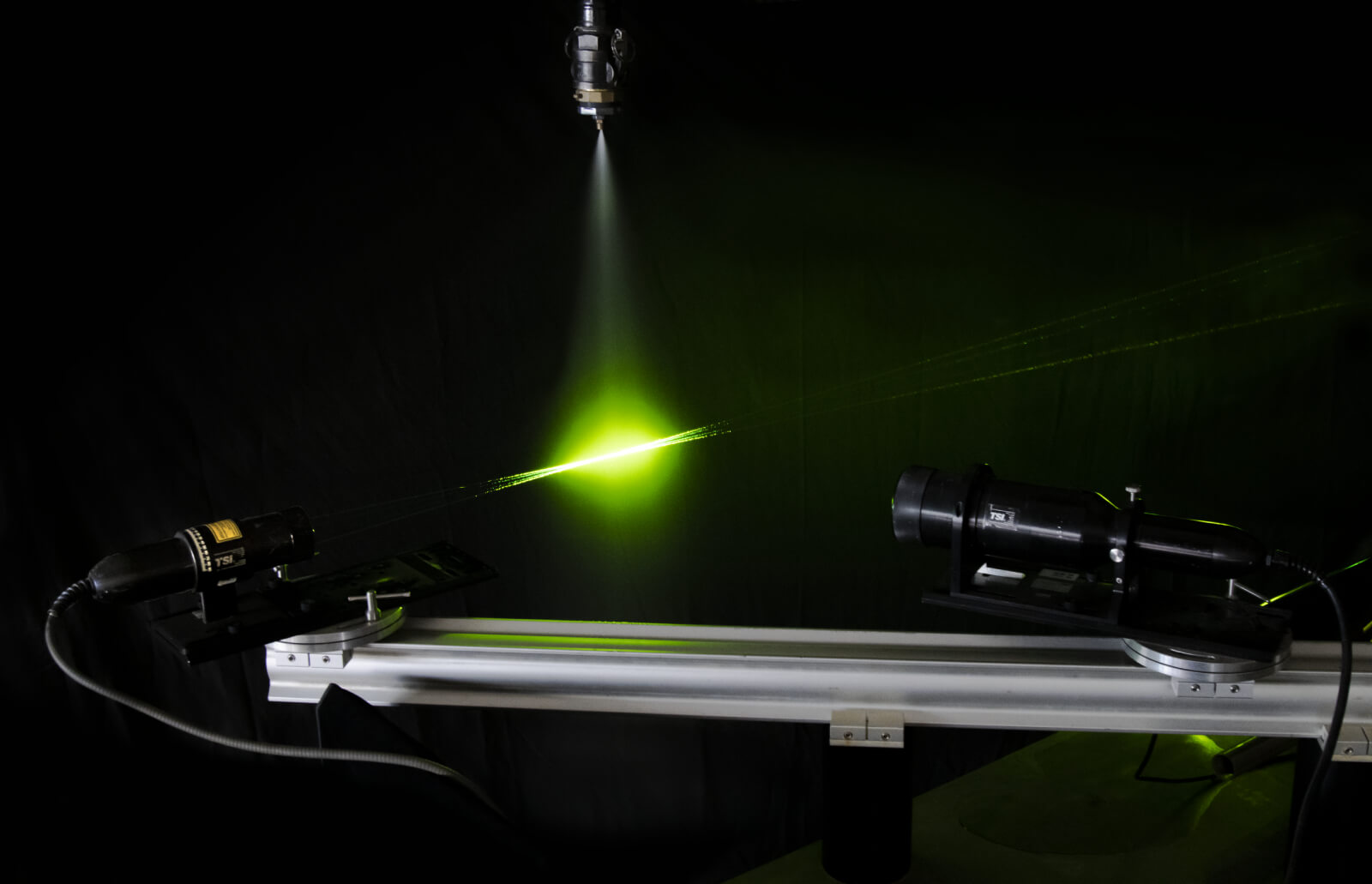
Can you explain how BETE´s Droplet Analyzer operates?
The size of the droplets in the spray is one of the most important spray characteristics since it determines the surface area of the liquid and the trajectory of the droplets leaving the nozzle. We use both an imaging system and a phase-Doppler Particle Analyzer to measure the size of the droplets in a spray. The imaging system uses a strobe light and video camera to take images of droplets. Custom image processing software sums the pixels of each droplet in the image and applies a scale factor to calculate the true size. The imaging system is particularly useful for analyzing sprays with large droplets that may not be round.
The phase-doppler system uses laser light refracted through droplets to measure both size and velocity. This system is useful for looking at small droplets or when we need velocity for a CFD study.
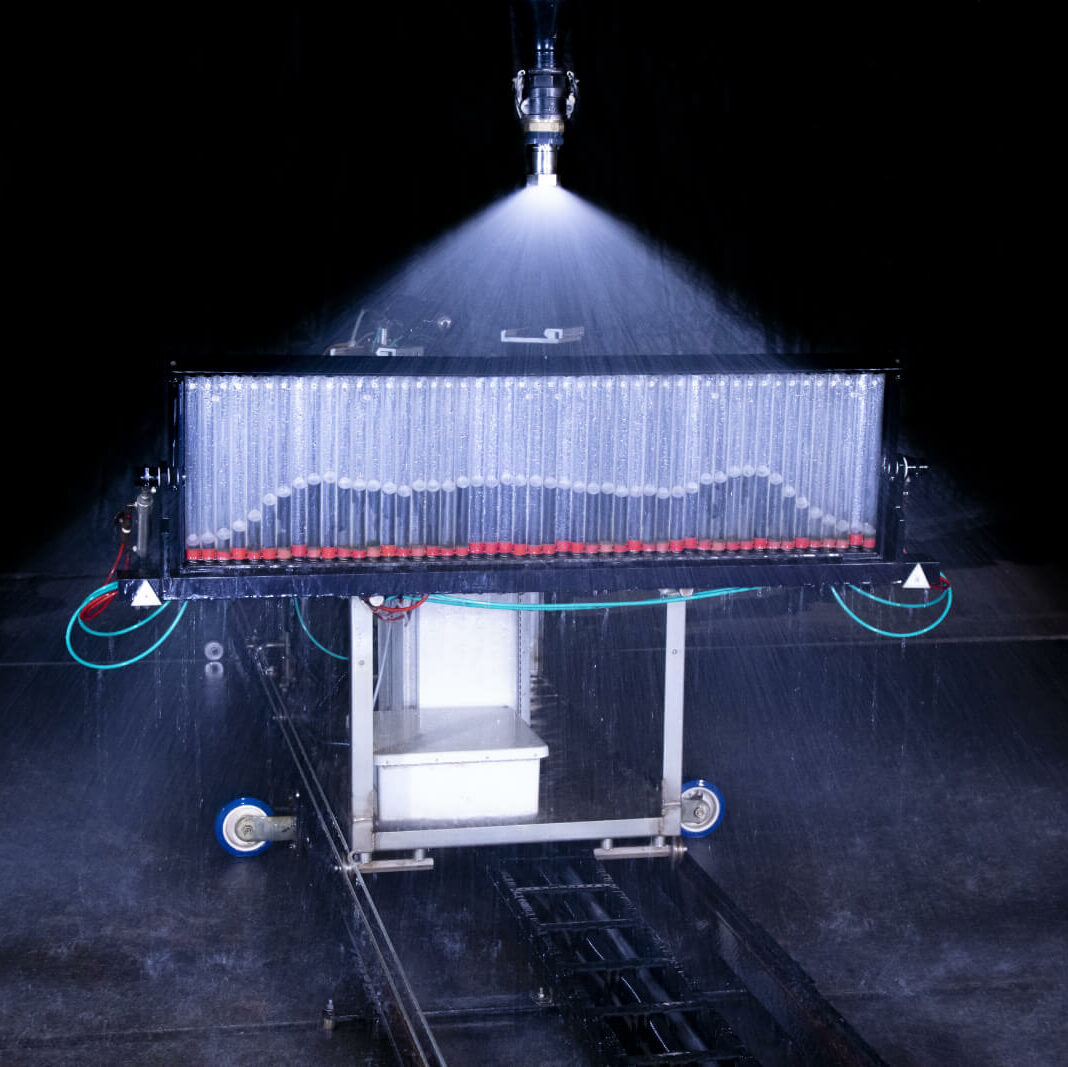
Can you explain how BETE´s high-speed Patternator operates?
The patternator measures the liquid distribution within the spray which is important for applications that require uniform spray distribution. The patternator is a row of transparent tubes each containing a light plastic ball. During a test, the nozzle sprays vertically down into the row of tubes and water accumulates for a measured time. We measure the deposition rate into each tube using computer processing of an image of the tubes and the floating balls.
Tell us about BETE´s lab capabilities.
The BETE spray lab facility (15 m X 10 X 7 m) is equipped with state-of-the-art instrumentation and controls including spray diagnostic equipment. We also have a spray chamber (1.6 m X 3 m X 2.6 m) equipped with a recirculation tank, where we can spray non-hazardous materials such as glycerin to simulate process fluids. Our pumping capacity is over 7000 L/min at low to moderate pressures and we can pump as much as 150 L/min at 120 bar. We also have an outdoor spray area that is 60 m X 20 m. Here we’ve run tests of nozzles at over 20,000 L/min and measured the wind drift of sprays.
In addition to spray testing, we also can set up other kinds of tests such as strain gauge tests to support finite element analysis, hydrostatic testing, life cycle tests at elevated temperatures, and more.
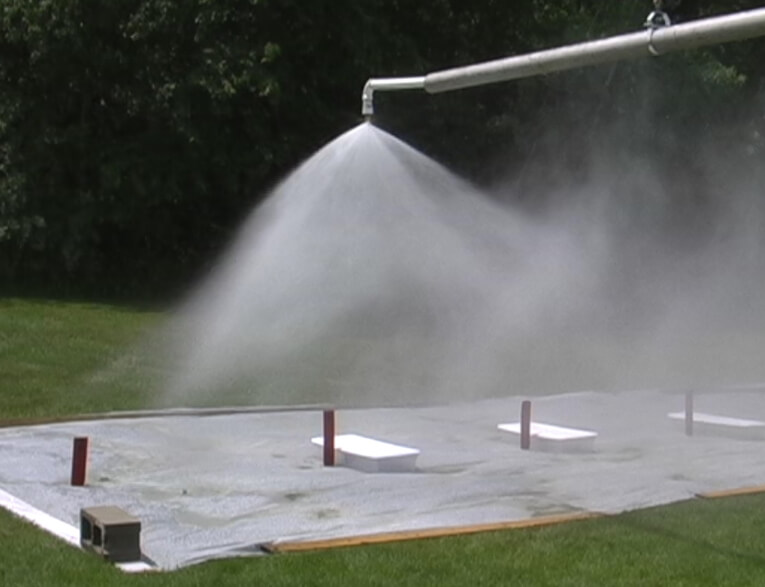
BETE can also provide physical modeling since a physical model of a complex dynamic process can be easier to construct and test than a CFD model and observation or experimentation using an actual process may be impossible. Sometimes it is necessary to test a physical model that uses safe materials and conditions to validate a CFD model of a process that isn’t safe to duplicate in the lab. Examples of physical models we have built include custom wind tunnels, fluidized beds, heat exchanger tube sheets, and coating simulations.
BETE has in-house capabilities for welding and fabrication which are combined with engineering and instrumentation experience. These allow us to design, build, instrument, and operate a model, interpret the results with the customer, and then supply a nozzle or spray system to solve the process problem.




